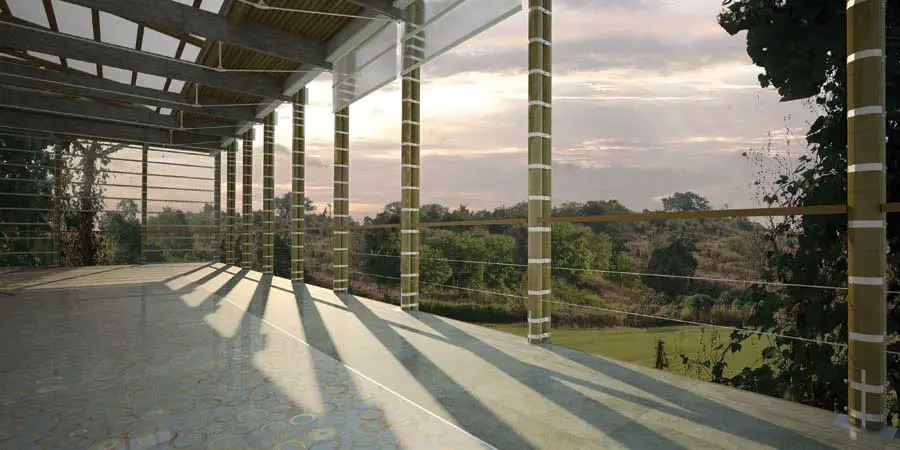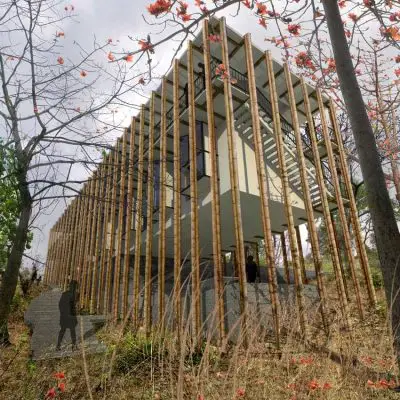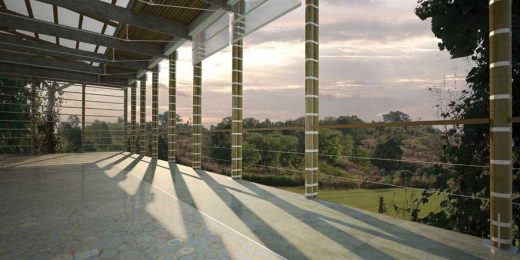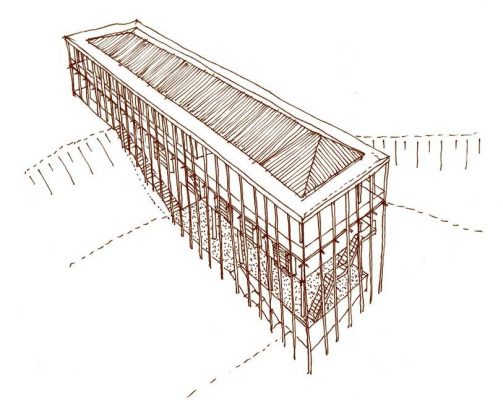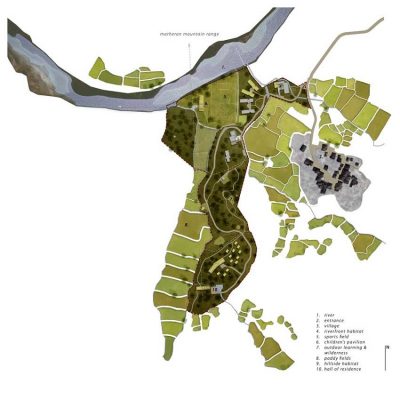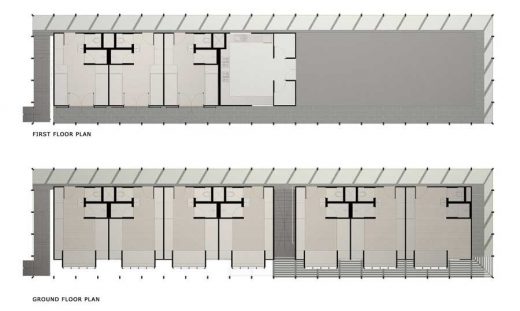Magic Bus, Karjat Dam Building, Images, Architect, Design, NGO Project, Plans
Magic Bus Karjat Dam : Architecture
Contemporary Building Proposal in India design by Architecture BRIO
17 Dec 2008
NGO Magic Bus staff dormitory
Design: Architecture BRIO
The dormitory for the staff of the NGO Magic Bus will be located in the valley below the Karjat Dam. Sited on the tip of a small plateau it overlooks paddy fields and sleepy villages. Embedded in the topography, the dormitory reveals different elevations depending on the viewpoint. By utilizing the steep slope an intimate low fa¡ade faces the entrance court on the forest side. A more prominent vertical fa¡ade faces the paddy fields.
The interior of the dormitory will reveal itself as one moves through the building. A staircase cutting through the building mass breaks up the passage on the ground floor. This cut in the building frames the exterior beyond, creating interplay between inside and outside.
This staircase leads you down to a large double height recreational space. Suspending the two-storey structure over the ridge creates this space below. The top floor is surrounded on all sides by a veranda. At the end of a colonnaded passage a large shaded deck overlooks a most spectacular view over the trees, towards the contours of the Matheran mountain range in the distance.
A ‘cage’ of bamboo columns wraps around the building. Public circulation and veranda’s occupy the interstitial spaces between the external bamboo columns and the internal mass. The large covered veranda’s and the relatively narrow width of the building envelope allow for comfortably ventilated and shaded semi-indoor spaces. The bamboo enclosure creates a dialogue between the interior and the dramatically changing landscape.
The natural landscape changes from a dense brightly green colored jungle-like forest during the monsoon months to a pale brown shrubby wasteland during the dry and hot summer months. The building has to respond to these extreme conditions by allowing enough shade and breeze during the summer and providing a waterproof indoor environment during the stormy monsoons. The screen of columns creates an ever-changing pattern of light and shadow throughout the seasons and times of the day, making the building a ‘sensor’ of light.
A reduced material palette using bamboo for columns and walls, and natural stone and polished concrete for floors, neutralised by the whitewashed interiors gives the calm rational architectural language a sensual physical presence. The row of bamboo posts at 1.5-meter intervals forms a permeable skin around the building as well as supports the entire building. Bamboos, being the fastest growing grass in the world, are a high yielding renewable material resource. The high strength and low weight factor of bamboo makes it remarkably earthquake and cyclone resistant.
With invaluable inputs from engineer Vilas Gore of GeoScience Services, innovative technologies and methods are used in order to reduce the amount of non-renewable materials throughout the building. The selection of materials and building methods is optimized to decrease the load on the building, which in turn allow the supporting columns to be sleek and elegantly dimensioned.
The columns consist of two bamboos, with a diameter of 90mm, joined together by steel strips. Steel dowels inserted in between the two bamboos avoid shear movements. Trusses made of pre-cast concrete and steel tension cables span between the columns. The floors are made of half cut bamboo, on which a layer of 50 mm concrete is laid, finished with a layer of natural stone. Walls are infill panels made of split bamboo covered with reinforced plastered on the inside.
The construction details emphasize the lightness of the structure. A steel plate, which is embedded in the pre-cast concrete beam, connects to both the lower and upper bamboo twin-column as well as the bamboo tie beams. While this steel plate cuts through the bamboo column to make use of reverse bending, the continuity of the bamboo columns is maintained accentuating the verticality of the structure. Combining natural and local materials with state-of-the-art technologies and materials such as wood, concrete and steel this building will portray a new construction idiom – an expression of contemporary sustainable architecture.
(Magic bus is a NGO founded in Mumbai in 1999 aspiring to create a long-term, sustained intervention of life skills development for at-risk children through recreation, play and creative expression activities. They organise weekly sports and games sessions, educational day-trips to their weekend residential camp ‘the Magic Bus Centre’. Architecture BRIO has been asked to design the second construction phase of the Centre comprising a staff dormitory, separate facilitation centres for children and corporates, and a children’s village.)
Magic Bus images and text copyright of Architecture BRIO
Magic Bus India images / information from Architecture BRIO 171208
Location: Karjat Dam, India, South Asia
Architecture in India
Indian Architecture Designs – chronological list
New Delhi Architecture Walking Tours by e-architect
Indian Architect : architecture practice contact details
Practice Information:
Architecture BRIO based in Bandra (W), Mumbai, India
Vidyalankar Institute of Technology Mumbai
Sequel, New Delhi
Design: Morphogenesis
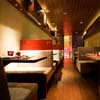
image from architect
New Delhi Restaurant
Comments / photos for the Magic Bus Karjat Dam design by Architecture BRIO page welcome

